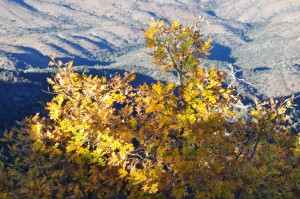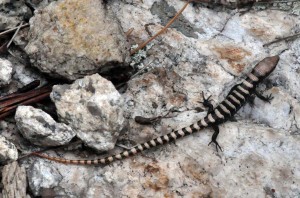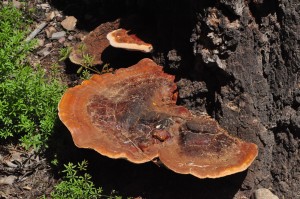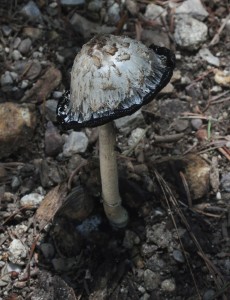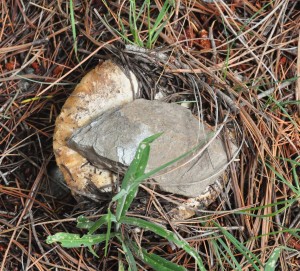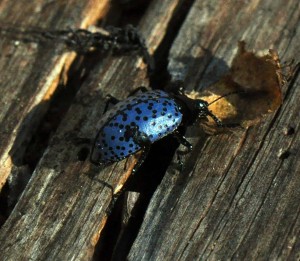Today was a good day to hike. Ed and I decided to go up to Turkey Run in the Catalina Mountains even though we knew that many of the flowering species have completed their blooming season. The mountain air was fresh and cool. We soon came across old friends, lemmon hawkweed, Richardson’s geranium, Western sneezeweed and others. We stopped to look at the gentian flower stalk – 7 feet tall, but bent over and drying up. There we met a couple. They were walking with their adorable Italian greyhound and had stopped to look down a pipe where they had seen animals get trapped. Once it was a mouse. Today it was a baby skunk with beautiful white and black markings,curled up at the bottom of the pipe. The pipe is more than a foot in diameter and at least three feet deep. The little skunk showed no signs of life. The couple placed a branch in the pipe so that any other animal that fell in might have a means of escape.
After we left them we found a group of bog orchids, many still in full and glorious bloom.
Ed and I continued up the trail and sat to snack on a log at the edge of a clearing. We then continued a short distance up the Aspen Draw trail. As we walked my mind went back four months to a time when I was hiking this trail alone. Our spiritual growth group had the task of being still, so part of the reason for going alone was to practice stillness in the beauty of the forest. I looked to my left, and just about 20 feet below me was a deer. I held still and looked at it. The deer looked back. We held eye contact for several minutes. The deer then turned to graze, and I continued on my way up the trail. I did not go very far and turned around only to see the deer crossing the trail going up the steep hill. In a few minutes the deer was about 20 feet above me. Again I stopped and we made eye contact. I was very content to stay in stillness with the deer indefinitely. Several times the deer looked away from me, and grazed a little. Then she turned to look at me again. We continued in communion for about ten minutes and then the deer slowly made her way up the slope and out of my sight.
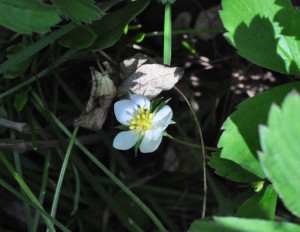
I told Ed about this encounter (which happened back in May), and soon we turned around to retrace our steps back to the car. We have a tradition that we must find at least one plant in bloom on the return trip that we did not see on the outward trip. It wasn’t long before I noticed two strawberry plants in bloom. Later we saw another shown in this picture. Just then I looked ahead and saw two deer, one crossing the trail in front of us. We held still and watched as the the second deer crossed the trail and they made their way toward us, apparently unaware of us or unconcerned about our presence. This picture shows how the deer were mostly in the shade. They passed us walking in the woods about three yards away from us on our right. One went on ahead and disappeared into the forest. The other, evidently a young male, started rubbing his six inch antlers against a tree. After several minutes he finally turned to follow his friend up the hill. It was one of those special moments on t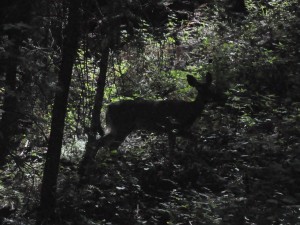 he trail.
he trail.

